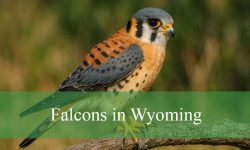Connecticut, located in the northeastern United States, is home to a diverse array of wildlife. Among its most impressive residents are eagles, known for their power, grace, and striking presence in the sky.
Although only a few eagle species are found in the state, each sighting offers a rare and memorable experience for birdwatchers and nature enthusiasts alike. These majestic birds often capture the attention of anyone lucky enough to spot them.
In this article, we explore the four types of eagles that have been observed in Connecticut. You’ll learn how to identify each species, understand their preferred habitats, and gain tips for spotting them in the wild.
Bald Eagle (Haliaeetus leucocephalus)
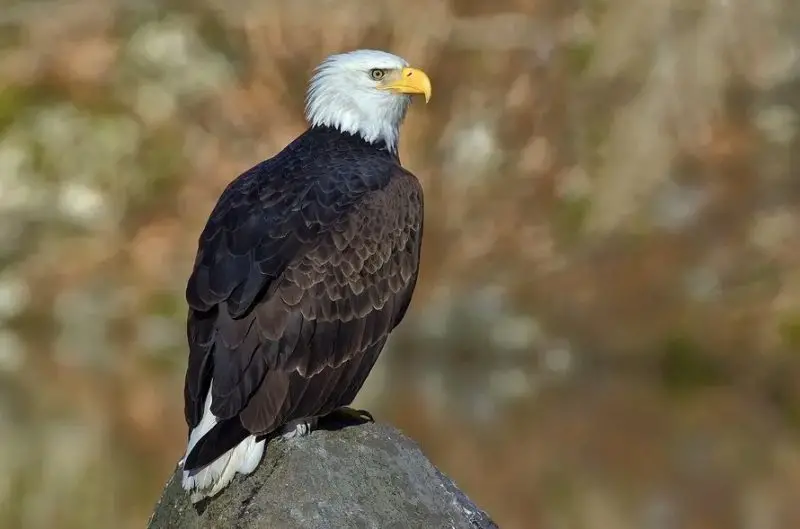
Overview
The Bald Eagle, a symbol of American strength and freedom, has made a remarkable recovery in Connecticut after facing near extinction in the mid-20th century. Once decimated by the effects of DDT and habitat loss, conservation efforts have led to a resurgence in their population. Today, Connecticut hosts a thriving Bald Eagle community, with sightings reported across the state.
Identification
Adult Bald Eagles are easily recognizable by their striking appearance. They possess a distinctive white head and tail, contrasting sharply with their dark brown body and wings. Their powerful yellow beak and large size further distinguish them from other raptors. Juveniles, however, lack the white plumage and can be confused with other large birds of prey. Over time, they molt into their adult plumage.
Habitat and Behavior
Bald Eagles are typically found near large bodies of open water, such as lakes, rivers, and coastal habitats. In Connecticut, they are often spotted along the Connecticut River, at reservoirs, and in marshy areas. Their diet primarily consists of fish, but they are also known to scavenge carrion and hunt small mammals. During the winter months, they migrate southward from northern regions in search of open water and food sources. The Shepaug Eagle Observatory in Southbury is a popular spot for observing these majestic birds during their wintering period.
Conservation Status
Thanks to dedicated conservation efforts, the Bald Eagle’s population in Connecticut has seen a significant increase. The state now boasts over 80 active nesting pairs, a testament to the success of wildlife protection programs and habitat restoration initiatives. Their recovery is a shining example of how concerted human efforts can reverse the decline of endangered species.
Golden Eagle (Aquila chrysaetos)
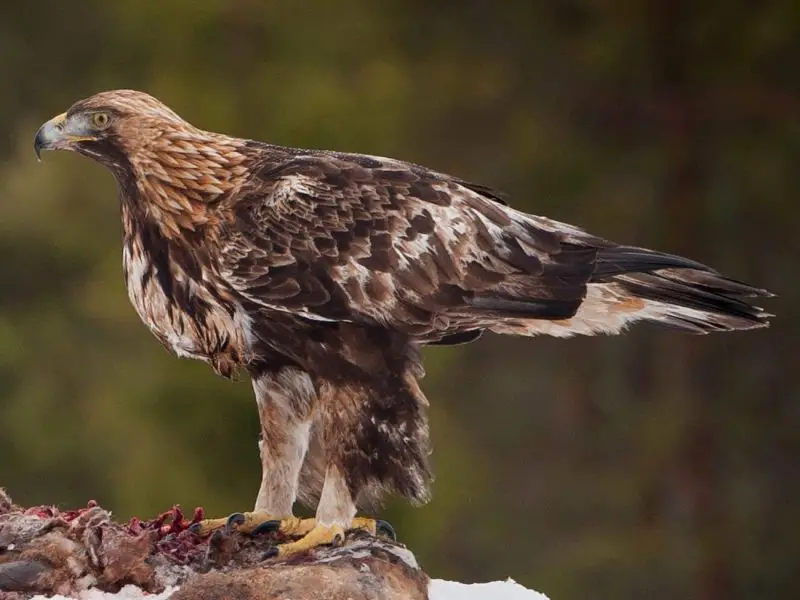
Overview
The Golden Eagle is a formidable raptor known for its agility and hunting prowess. While more commonly associated with western North America, this species has been observed in Connecticut, though sightings are infrequent. Their presence in the state is often attributed to migratory patterns and occasional vagrancy.
Identification
Golden Eagles are large birds with dark brown plumage and golden-brown feathers on the back of their heads and necks, which give them their name. Their wings are long and slightly tapered, and they have a broad tail that is slightly rounded. Unlike the Bald Eagle, they lack the distinctive white head and tail, making identification challenging, especially for juveniles. Their keen eyesight and powerful build make them formidable hunters, capable of taking down large prey.
Habitat and Behavior
Golden Eagles prefer open and rugged terrains, such as mountains, cliffs, and expansive grasslands. In Connecticut, they are typically seen during migration periods, particularly in the fall and early winter months. Their diet consists mainly of mammals, including rabbits and ground squirrels, but they are also known to hunt birds and scavenge carrion. Due to their elusive nature, they are often mistaken for other large birds of prey.
Conservation Status
Golden Eagles are considered a species of conservation concern in many parts of their range. In Connecticut, their numbers are limited, and they are not known to breed within the state. Conservation efforts focus on protecting their migratory routes and ensuring the preservation of suitable habitats to support their populations.
White-tailed Eagle (Haliaeetus albicilla)
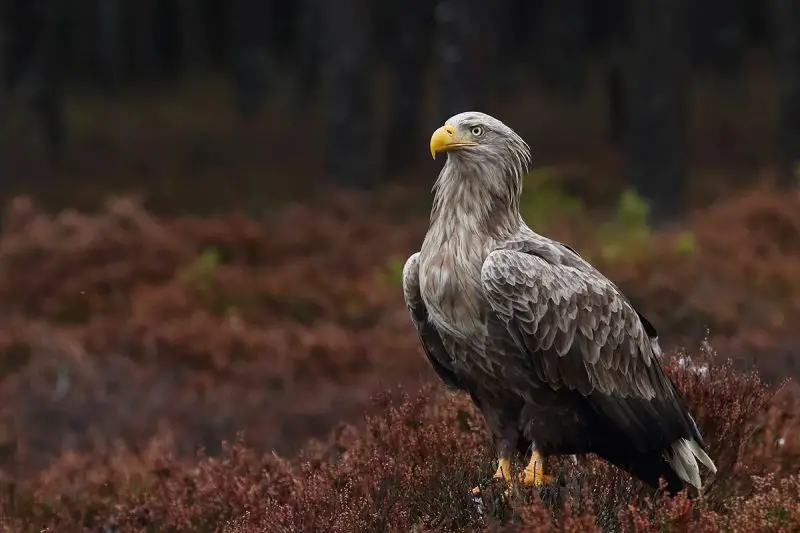
Overview
The White-tailed Eagle, also known as the Sea Eagle, is a large bird of prey native to northern Europe and Asia. While their primary range does not include North America, there have been rare sightings of this species in Connecticut. These occurrences are typically the result of vagrancy and are not indicative of established populations in the state.
Identification
White-tailed Eagles are characterized by their massive size and broad wingspan. Adults have a distinctive white tail, which contrasts with their dark brown body. They possess a powerful yellow beak and large, strong talons. Juveniles are often darker and lack the white tail, making them more challenging to identify. Their impressive size and soaring flight patterns make them a remarkable sight when observed.
Habitat and Behavior
White-tailed Eagles are typically found near large bodies of water, including lakes, rivers, and coastal regions. They primarily feed on fish but will also take birds and small mammals when available. In Connecticut, sightings are extremely rare and usually occur during migration periods. Due to their rarity, there is limited information on their behavior and habitat preferences within the state.
Conservation Status
Globally, White-tailed Eagles are considered a species of least concern, with stable populations in their native ranges. However, in North America, they are not known to breed, and their presence in Connecticut is considered accidental. Conservation efforts in their native regions focus on habitat preservation and reducing human-induced threats to ensure their continued survival.
Rare and Vagrant Eagles in Connecticut
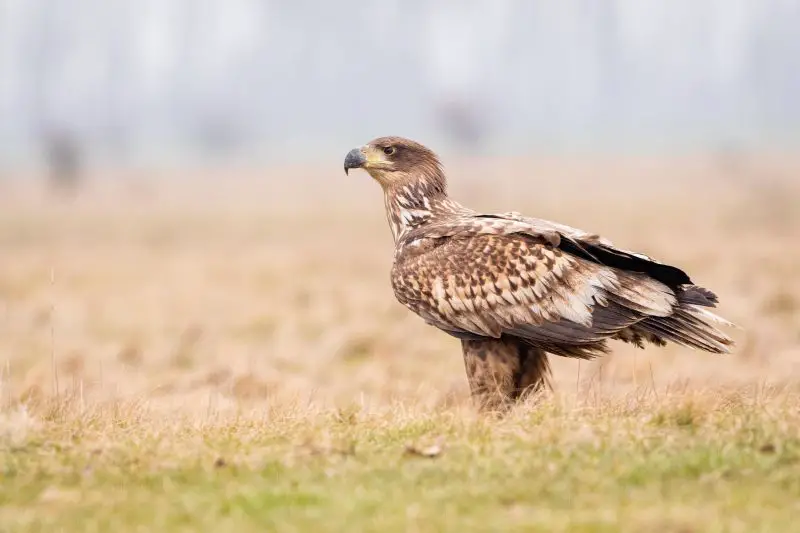
Overview
In addition to Bald Eagles and Golden Eagles, Connecticut occasionally records rare vagrant eagles. These include occasional sightings of juvenile White-tailed Eagles or unusual migratory Golden Eagles from northern regions. Such rare appearances are sporadic and often excite local birdwatchers.
Identification
Vagrant eagles can be challenging to identify. Key features include wing shape, plumage patterns, and tail coloration. Juvenile White-tailed Eagles, for instance, appear mostly brown with a slightly lighter head and a bulky wingspan, distinguishing them from Bald Eagles. Detailed observation and photography are essential for confirming these rare species.
Conservation Notes
Because these eagles are not native to Connecticut and appear only accidentally, there is no local conservation program targeting them. However, recording their sightings helps ornithologists track migratory routes and understand factors influencing vagrancy in eagle populations.
Comparison of Eagles in Connecticut
Feature |
Bald Eagle (Haliaeetus leucocephalus) |
Golden Eagle (Aquila chrysaetos) |
White-tailed Eagle (Haliaeetus albicilla) |
|---|---|---|---|
Size |
Large, wingspan 6–7.5 ft |
Large, wingspan 5.5–7 ft |
Very large, wingspan 6.5–8 ft |
Head & Plumage |
White head and tail, dark brown body |
Dark brown with golden feathers on head/neck |
White tail, dark brown body |
Beak & Talons |
Yellow beak, powerful talons |
Dark beak, strong talons |
Yellow beak, massive talons |
Habitat |
Near lakes, rivers, reservoirs |
Open areas, cliffs, grasslands |
Near large bodies of water, coastal regions |
Behavior |
Fish-eating, scavenger, winter migration |
Hunts mammals, migratory visitor |
Feeds on fish and birds, vagrant sightings only |
Occurrence in Connecticut |
Common, thriving population |
Rare, mostly migratory |
Extremely rare, accidental sightings |
Best Time and Places to Observe Eagles in Connecticut
Connecticut offers several prime locations for eagle watching throughout the year. Bald Eagles are most commonly observed during the winter months, from December through March, when they gather near open water sources. The Connecticut River and its surrounding wetlands provide excellent viewing opportunities, as do the state’s major reservoirs, including Candlewood Lake and Bantam Lake.
Golden Eagles are far less common in Connecticut and are usually seen during fall migration, typically from October to early December. Observers are more likely to spot them in open fields, hilltops, and forest edges, especially in the northwestern part of the state.
White-tailed Eagles are extremely rare visitors to Connecticut. Sightings are usually accidental and sporadic, often occurring during unusual migratory patterns. Birdwatchers are encouraged to remain alert during peak migration seasons in the fall and early spring, although opportunities are very limited.
FAQs About Eagles in Connecticut
What is the most common eagle in Connecticut?
The Bald Eagle is the most frequently observed species in the state. Thanks to conservation efforts, their population has grown significantly, especially along rivers and reservoirs.
Can Golden Eagles be seen in Connecticut year-round?
No, Golden Eagles are primarily migratory visitors. They are mostly seen during fall migration, and sightings are rare compared to Bald Eagles.
Are White-tailed Eagles native to Connecticut?
No, White-tailed Eagles are native to Europe and Asia. Sightings in Connecticut are extremely rare and considered accidental vagrants.
Where is the best spot to watch Bald Eagles in winter?
The Shepaug Dam in Southbury and the Connecticut River Valley are popular wintering areas where Bald Eagles congregate, providing excellent opportunities for observation.
What should I bring for eagle watching in Connecticut?
Binoculars or a spotting scope, warm clothing in winter, and a camera with a telephoto lens are recommended. Observers should also maintain a respectful distance to avoid disturbing the birds.
Conclusion
Connecticut’s eagle species, though limited in number, showcase the state’s rich avian diversity and the success of conservation efforts. From the majestic Bald Eagle to the elusive Golden Eagle and the rare White-tailed Eagle, each species offers unique insights into the world of raptors.
While sightings may be infrequent, they serve as a reminder of the importance of preserving habitats and supporting wildlife conservation initiatives. For bird enthusiasts and casual observers alike, encountering these magnificent birds is a testament to the resilience of nature and the ongoing commitment to environmental stewardship.






